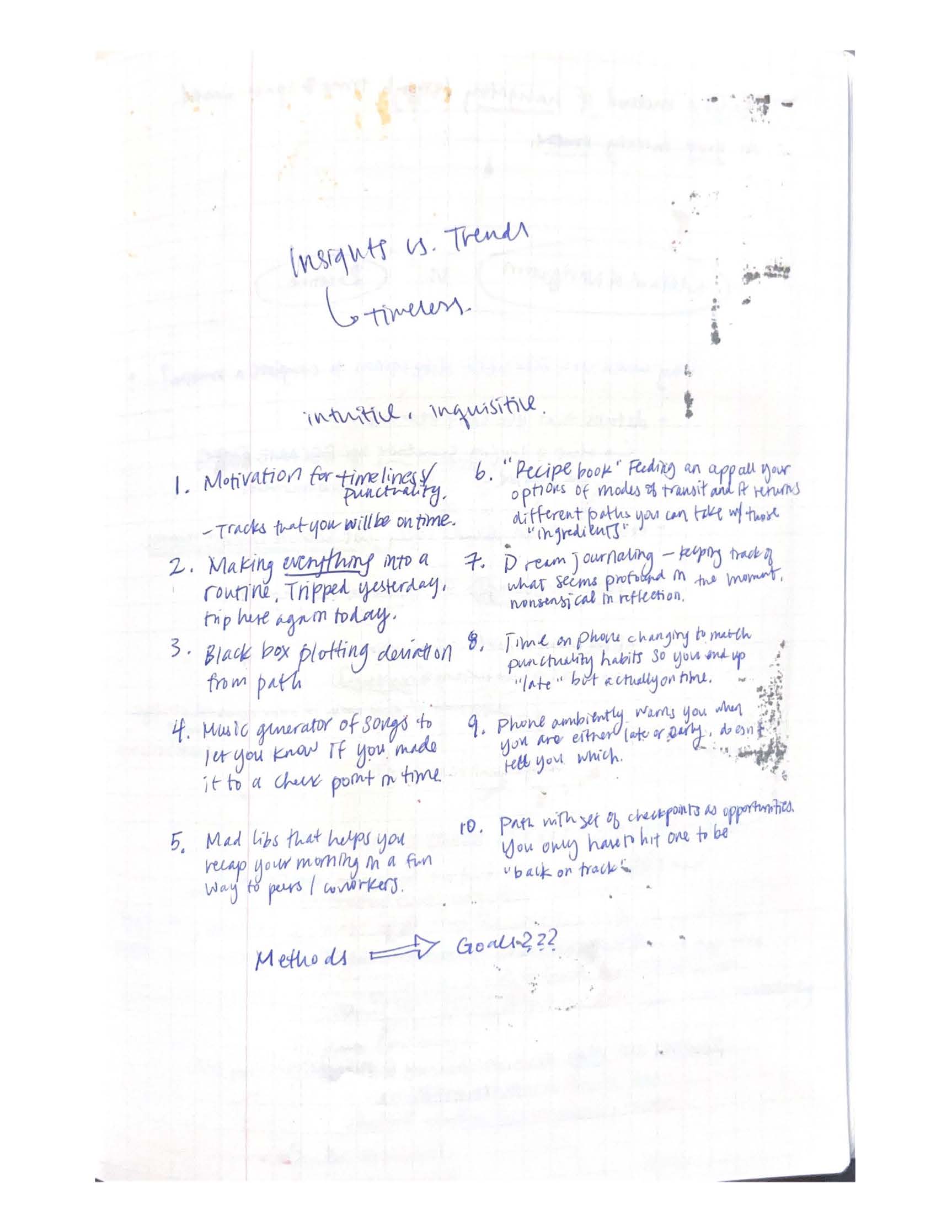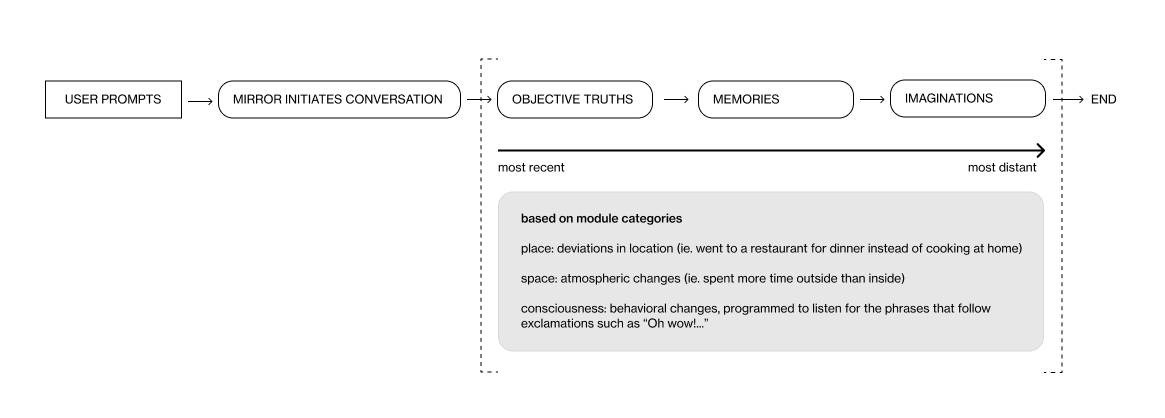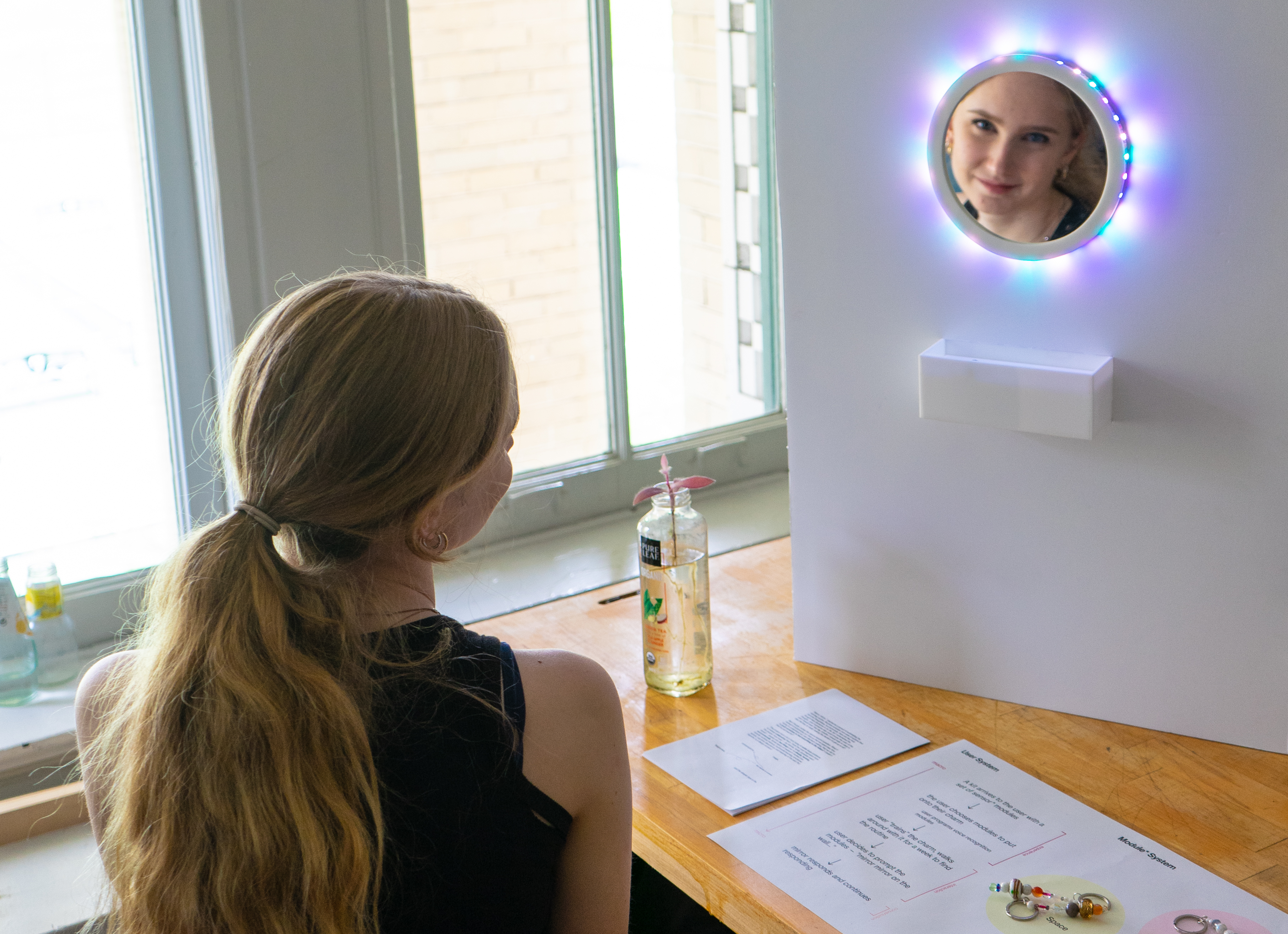![]() “Mirror, mirror...” | Routines and Rationale
“Mirror, mirror...” | Routines and Rationale
GOAL
Design a method of navigating through time and space, inspired by the morning routine.
We often find ourselves at a cognitive dissonance between conflicting thoughts and behaviours, time and space. Create a multi-modal experience to aid the relationship between the past, present, and future self — automate rationalization while simultaneously encouraging emotional awareness and integrity.
Design a method of navigating through time and space, inspired by the morning routine.
We often find ourselves at a cognitive dissonance between conflicting thoughts and behaviours, time and space. Create a multi-modal experience to aid the relationship between the past, present, and future self — automate rationalization while simultaneously encouraging emotional awareness and integrity.
ABSTRACT
Our present is constructed by every micro-macro decision made throughout our lives, yet our lives mostly function by routines. Routines are a method of automation, when sets of actions go without decision-making, but what truly makes it so that something is no longer a choice? “Mirror, mirror...” prompts conversations celebrating our decisions that break from routine, drawing connections between our life’s smallest regrets and grandest delights.
Our present is constructed by every micro-macro decision made throughout our lives, yet our lives mostly function by routines. Routines are a method of automation, when sets of actions go without decision-making, but what truly makes it so that something is no longer a choice? “Mirror, mirror...” prompts conversations celebrating our decisions that break from routine, drawing connections between our life’s smallest regrets and grandest delights.
ENVIRONMENTS STUDIO: INTERACTION
Spring 2022
Spring 2022
duration
6 weeks
6 weeks
tools
Arduino
Voiceflow
Laser cutting
Arduino
Voiceflow
Laser cutting
areas of research
working memory, multimodal learning, emotional spirals, cognitive dissonance
working memory, multimodal learning, emotional spirals, cognitive dissonance
Part 1: Conversational Agent as Method of Navigation
Could we develop sensor technologies to track breaks in routine — which then equates to explanations for our decisions?
IDEATION
The overall concept process path:
An action becomes part of a routine once it is thoughtless to perform.
︎︎︎
There are very few thoughtless decision in my own life.
︎︎︎
What if someone else could choose the color of the shirt, what I would wear that day, whether I should walk to class or take the bus, or to get out of bed at all?
︎︎︎︎︎︎
What if instead of automating our lives so that we spend less time trying to understand our own decision making, we tried to push ourselves to feel everything to the fullest?










USER FLOW

FABRICATION


CONVERSATION BREAKDOWN

PROTOTYPING & ITERATION — reflection
**Modality Check: Does this work as a conversation?
Building this out was important because it allowed me to critique the project from both a third person (listening) and first person (participating) perspective.
Through talking with it: I was able to iterate on utterances and user intents to add.
Through the physical model: I paid attention to visual cues I could design, interaction in the form of motion, and multi-modality. I realized that the model could visually cue to its live participatory stage, as well as cue to where the voice was coming from. Physical prototyping also brought to my attention the importance of volume, making me then consider physical scale and how it determined volume projection, and privacy. Both the size of the mirror itself and the volume of the voice prompts the user to be a certain distance away, which influences the (1) sense of privacy in the interaction as a whole, (2) tone, and (3) personality of the voice agent.
PART 2: CONVERSATIONAL AGENT as a method of storytelling
From writing the conversational flow for the “MIRROR, MIRROR” prototype, I started thinking about how to use (1) conversational structure, (2) prompting, and (3) interactivity to write/generate stories. What are the stories that our routines tell, and on the converse, how can these stories then again inspire our lives?
(to be updated)
 “Mirror, mirror...” | Routines and Rationale
“Mirror, mirror...” | Routines and Rationale